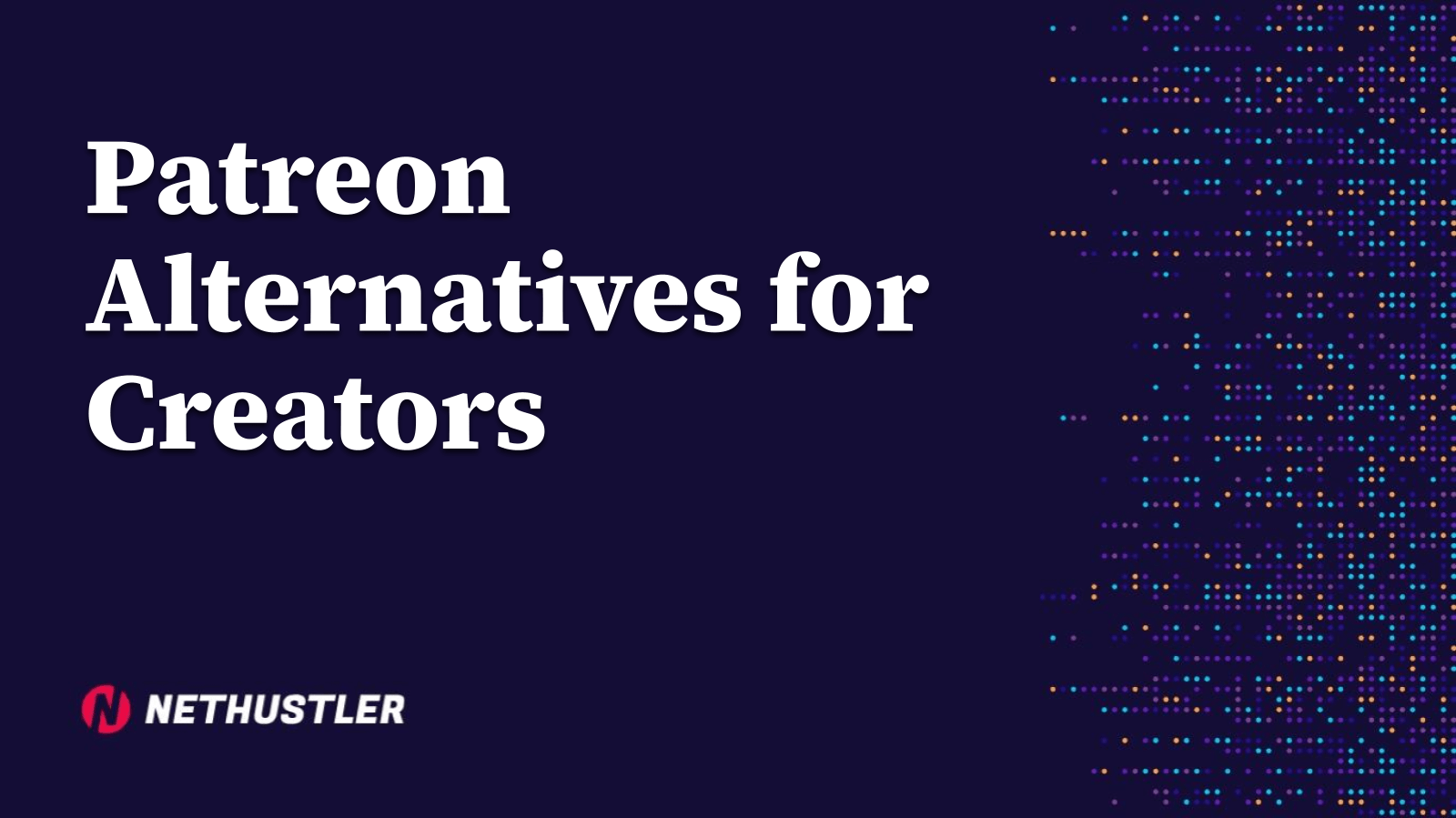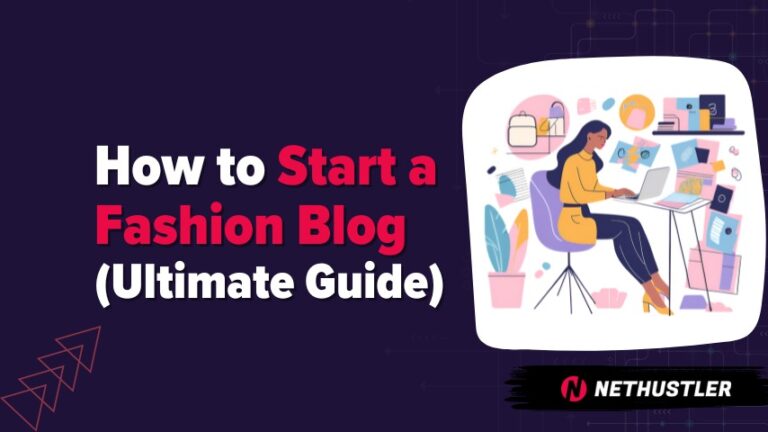Top 10 Patreon Alternatives for Creators

Ever wonder why your local coffee shop has a “buy 10 get 1 free” punch card?
Yeah, stick with me here. It’s because getting a regular to come back is a thousand times easier than finding a new customer. And yet, here we are, in the creator economy, and everyone is still just screaming into the void of YouTube and TikTok, hoping for a viral hit.
It’s exhausting.
You need your own punch card. Your own little corner of the internet where your actual fans can support you directly. For years, the default answer was just “go use Patreon.” And yeah, it works. Kinda. Patreon is not what it once was when it first came out, it’s gotten bloated, the fees are… not great, and they are more strict now than ever with what they allow on their platform, so you’re still building your house on someone else’s land. That leaves many creators to look for Patreon alternatives.
Let’s talk about where you can actually build a membership that doesn’t suck.
So, Why Even Ditch Patreon?

Look, I’m not saying Patreon is pure evil. It legitimized the whole direct-support model for digital creators. But let’s be real. Their fee structure is getting a little greedy, sitting at 8% or even 12% plus payment processing. For what? A directory that barely helps you get discovered and a platform that feels kinda… Web 2.0?
So they take a cut of your hard-earned cash, and if they decide they don’t like your content one day, poof. You’re gone. Just like that, your entire recurring revenue stream is nuked. It’s the same old story we see with YouTube. Relying on one platform is just asking for trouble, which is why people are even looking for YouTube alternatives in the first place.
As a digital creator you need more control, better branding and lower fees. You need a platform that works for YOU, not the other way around. The whole point of this game is to make money online on your own terms, right? So let’s look at some Patreon alternatives that actually get that.
Ko-fi: The “Tip Jar” That Grew Up

Ko-fi started as a simple idea: let people “buy you a coffee” as a one-off tip. No commitment, just a few bucks to say thanks. And honestly? That’s still its best feature. It’s the lowest-friction way for someone to support you.
But it’s not just a tip jar anymore. They’ve added memberships, commissions, and even a shop for your digital products. And the best part?
They don’t take a cut of your money on the free plan (you still pay standard PayPal/Stripe fees, ofc). Zero. Zilch. Nada.
If you upgrade to Ko-fi Gold for $12 a month, you get more features and they still dont take a cut. That’s wild. The platform fee is 0%. Compare that to Patreon’s 8-12%. It’s a no-brainer.
The setup is pretty easy:
- Sign up and connect your Stripe or PayPal.
- Set up your page with a profile pic and a quick bio.
- Create your membership tiers if you want them. Or just use it for donations. Whatever.
- Put your Ko-fi link EVERYWHERE. Your YouTube descriptions, your IG, your Twitter bio (yes I still call it Twitter, X sounds lame), your email signature. Done.
The downside? It’s less feature-rich than some others. The community tools are basic. But for pure monetization without the fluff, it’s pretty hard to beat.
Ghost: For The Serious Newsletter Peeps

Okay, this one is for the writers, the podcasters, the people whose main thing is content, not just personality. Ghost is an open-source platform that’s all about publishing and monetization. Think of it as Substack’s cooler, more powerful cousin that gives you way more control.
It’s your website, your blog, and your paid newsletter all in one. You own the domain, you own the email list, and you own the design. Ghost takes 0% of your revenue. Let me repeat that. ZERO. PERCENT.
Of course, there’s a catch. You have to pay for hosting. Ghost(Pro), their official hosting, has plans starting around $15/month (if you pay annually). That’s it. For that, you get a powerful editor, analytics, and the ability to charge for access to your content. But since you need hosting anyway and a domain to start a blog, it’s basically not an issue.
This is for people serious about building a real media brand. You’re not just a “creator,” you’re a publisher. You can have free posts, members-only posts, and different tiers. The integration with email is seamless because… well, it’s a core part of the product. No more duct-taping Mailchimp to your Patreon and hoping it works.
It’s more work, for sure. You gotta actually manage your own site. But the freedom is insane. Total control over your brand and your money.
Memberful: The “I Already Have a Website” Option

What if you already have a WordPress site or a Squarespace you love? You probably don’t wanna move everything (I’m lazy and I know the struggle, sometimes I don’t change platforms/services for years, even if some do suck). You just want to add a paywall. That’s where Memberful comes in.
So Memberful is not a standalone platform. It’s a tool that integrates with your existing website to handle the membership stuff. It’s incredibly powerful for this one specific use case. You install a plugin, connect your Stripe account, and then you can protect any page or post on your site and put it behind a membership.
You can create different plans, manage your members, and see all your analytics. It just works.
The pricing is a little different. And more expensive. There’s only one plan which is $49/month and they also hit you with a 4.9% transaction fee on top, ouch. It sounds steep, but you’re paying for the robust integration and the fact that it lets you keep your audience on your domain. People aren’t going to “Memberful,” they’re going to YourAwesomeSite.com. That matters.
It’s the professional choice if you’re already established with your own website and just need to bolt on a powerful monetization engine.
While it’s still an indie platform, it was however, bought by Patreon, so if you want complete separation from the Patreon monopoly then choose any other WP membership plugins like the other two on this list or just ask for donations directly to your paypal.me account.
Mighty Networks: The All‑In‑One Community Hub
If Patreon is a glorified payment wall, then Mighty Networks is more like building your own little private social network. This is for creators who dont just want “pay me monthly,” but actually want a community wrapped around their content.
You can run courses, memberships, live events, and community feeds all under one roof. It feels more like a private Facebook Group on steroids, without Zuck spying on everything you do and randomly killing your reach.
The upside? You get an app, you get community tools, you get structured spaces for topics, events, courses, etc. It’s built for people who wanna be the “home base” for their niche, not just a tip jar on the side.
The downside? It’s not cheap. Their Community plans start at $49/month (if you pay annualy) and go up from there. So this is for creators who are serious about building a real hub, not just “I hope 3 people tip me $5.” But if you can get even a small core group of superfans paying monthly, it can cover itself pretty fast.
If you’re thinking in terms of “my own platform + community + maybe courses later,” Mighty Networks is a solid Patreon alternative that actually leans into community instead of just transactions.
Podia: The Simple All‑In‑One Sellbox
Podia is like that friend who doesn’t do anything fancy but always shows up on time and gets stuff done. Courses, memberships, digital downloads, email, simple website… it’s all there, in one login.
Instead of stitching together Patreon + Gumroad + random email provider + some janky WP plugin, Podia just says “yo, calm down, we got this.” You can host your products, run a membership, send emails to your members, even do free/paid communities now.
Pricing-wise, it’s surprisingly fair for what you get. They’ve killed off a lot of the “extra platform fees” bs and just charge you a flat monthly subscription depending on features. No taking a chunk of every dollar on top + transaction fees + random creator tax. That junk adds up fast, tbh.
If you’re a course creator, coach, or you just wanna sell a mix of products and membership access without needing 5 other tools, Podia is a legit alternative to Patreon that actually wants you to win, not just skim a cut forever.
Kajabi: For The “I’m Building An Empire” Creators
Kajabi is not for hobbyists. This is for the “I want the whole stack in one place and I’m fine paying for it” crowd. Courses, memberships, email marketing, funnels, landing pages, automations… all the buzzwords live here.
If you’re the type that’s already thinking about upsells, downsells, product suites, multiple offers, evergreen webinars, all that fun junk… Kajabi is basically your playground. You can totally replace Patreon by just having a recurring membership product inside Kajabi and call it a day.
But yeah, let’s not pretend it’s cheap. Plans usually start around $100+/month. That scares a lot of beginners, but if you’re already making a few hundred or thousand a month from your audience, moving to Kajabi can actually give you more money in your pocket vs revenue-share platforms bleeding you slowly over time.
If your brain is in “creator business” mode instead of “side hustle tip jar” mode, Kajabi is one of the strongest Patreon alternatives long-term. Just dont sign up if you’re still figuring out what you wanna sell. You’ll cry when the bill hits.
Buy Me a Coffee: The Ko‑fi‑Style Runner Up
Buy Me a Coffee is basically Ko‑fi’s cousin. Same core idea: people can toss you small payments as “coffee” (tips), or support you with memberships, or buy digital stuff.
The reason I still like it as a Patreon alternative is because it’s stupid simple. No bloated dashboard, no 47 different monetization gimmicks. You set up your page, connect payouts, and give people an easy way to support you without committing to heavy recurring subscription drama if they dont wanna.
Downside? The platform fee is there (they take a small cut on memberships and extras), and in my opinion Ko‑fi still feels a bit friendlier on the “we dont tax you to death” front. But some creators just vibe more with Buy Me a Coffee’s layout and UX, so whatever works, right?
If all you want is “here’s a clean page where my audience can tip me or join a simple membership,” this is an easy alternative you can spin up in like 10 minutes.
Gumroad: The OG Digital Seller
Gumroad has been around forever in internet years. It’s the classic “sell your digital thing here” platform: ebooks, templates, Notion packs, brushes, music, you name it. But yes, you can also run memberships on it.
So why use it as a Patreon alternative? Simple: if most of your income is from products and the recurring stuff is just a bonus, Gumroad lets you keep everything under one roof. People can buy a course once, then upgrade into a membership later, or vice versa.
Now, I’m not gonna pretend I love their fee changes over the years (they’ve kinda annoyed a lot of creators, lets be honest), but they’re still a huge marketplace with buyer trust. And that matters, especially for new people who dont have their own checkout pages dialed in yet.
If you’re already selling digital products and wanna bolt on a membership without learning an entire new ecosystem, Gumroad is “good enough” as a Patreon alternative. Not perfect, but solid.
Substack: The Writer‑First Option
Substack is super obvious at this point, but yeah, if your main thing is writing and email, it’s a direct Patreon competitor. Newsletters, paid subscriptions, simple blog. That’s the core.
The discovery aspect is the real cheat code here. Substack actually has a built-in network where people can find and recommend each other’s newsletters. It’s not magic traffic, but it’s still better than the “good luck getting discovered” vibes on Patreon.
The catch: they take 10% of your revenue, plus payment fees. So yeah, that stings, especially once you start making real money. But if you’re early and care more about growth and writing consistently than fine-tuning every percentage point, it’s a legit starting point.
If you ever outgrow it, you can always migrate your audience to something like Ghost later and keep more of the pie. Start on easy mode, then level up once it hurts your wallet enough. That’s usually how it goes anyway lol.
Kit: The Creator Gear Shelf (Not a Full Patreon Replacement)
Kit is a bit different from everything else on this list. It’s not a “pay monthly for my content” membership platform. It’s more like a curated gear shelf where you list your setup, tools, and favorite products with affiliate links.
So why even mention it here? Because for a lot of creators, especially YouTubers and streamers, affiliate income from gear recs and tools can quietly out-earn their Patreon. People constantly ask “what mic is that?”, “what camera are you using?”, “what plugin is that?” — Kit lets you send them to one clean page instead of a messy 30-link description.
No, it’s not a 1:1 Patreon alternative. You’re not building a paywalled membership. But as part of your overall “stop relying on one platform” strategy, having a solid Kit page is just smart. It diversifies your income and keeps more of your money in your pocket through affiliate programs instead of platform fees.
Think of Kit as a supporting actor in your monetization stack, not the main star. Pair it with Ko‑fi, Ghost, Podia, whatever, and suddenly you’re not begging Patreon to be nice to you anymore.
So, What’s The Real Answer?

Honestly, there isn’t one. Let me explain:
When people ask for “the best” alternatives for Patreon. Best for who exactly? The gamer streaming 40 hours a week? The artist selling digital brushes? The newsletter nerd writing 3,000‑word essays? The dude just trying to get a few tips for his meme page?
Different creator, different weapon.
- If you’re just starting and want the easiest way to get tips and light memberships, go with Ko‑fi or Buy Me a Coffee. Zero overthinking, just “here’s my page, support me if you wanna”.
- If you’re a writer or publisher and wanna build a serious media brand you fully control, Ghost is the move. If you want easier discovery and don’t mind the revenue share, Substack is the training wheels version.
- If you have a WordPress or Squarespace site you actually like and just want to slap a paywall on top, Memberful (or another solid membership plugin) does the job… just remember Memberful is owned by Patreon now, so it’s not full escape mode.
- If you want an all‑in‑one place for courses, memberships, products, and email without duct tape everywhere, Podia is the simple, sane choice. If you’re in “I’m building a whole damn empire” mode and have the budget, Kajabi is the nuclear option.
- If your whole thing is community, live sessions, and building a proper “home base” for your people, Mighty Networks is the closest thing to your own mini social network.
- If you’re mainly selling digital products and want memberships as a side‑quest, Gumroad is still fine. Not perfect, but it works. Pair it with Kit for your gear and tools recs and suddenly you’ve got extra affiliate money rolling in while you sleep (or doomscroll).
The real play here isn’t “find the magical platform that fixes my life.” The real play is: own your audience. Stop acting like these platforms are your boss. They’re just pipes.
Build your own email list. Get people onto your site, your domain, your ecosystem. Use Ko‑fi, Ghost, Podia, Kajabi, Mighty Networks, whatever, but make sure the long‑term winner is you, not some VC‑backed platform that can change the rules overnight.
Stack a couple of these tools together, test what actually works for your audience, kill what doesn’t, double down on what pays the bills. That’s it. No fancy guru secret.
Now stop reading this and go build something.
Stay hustlin’,
Stephen





